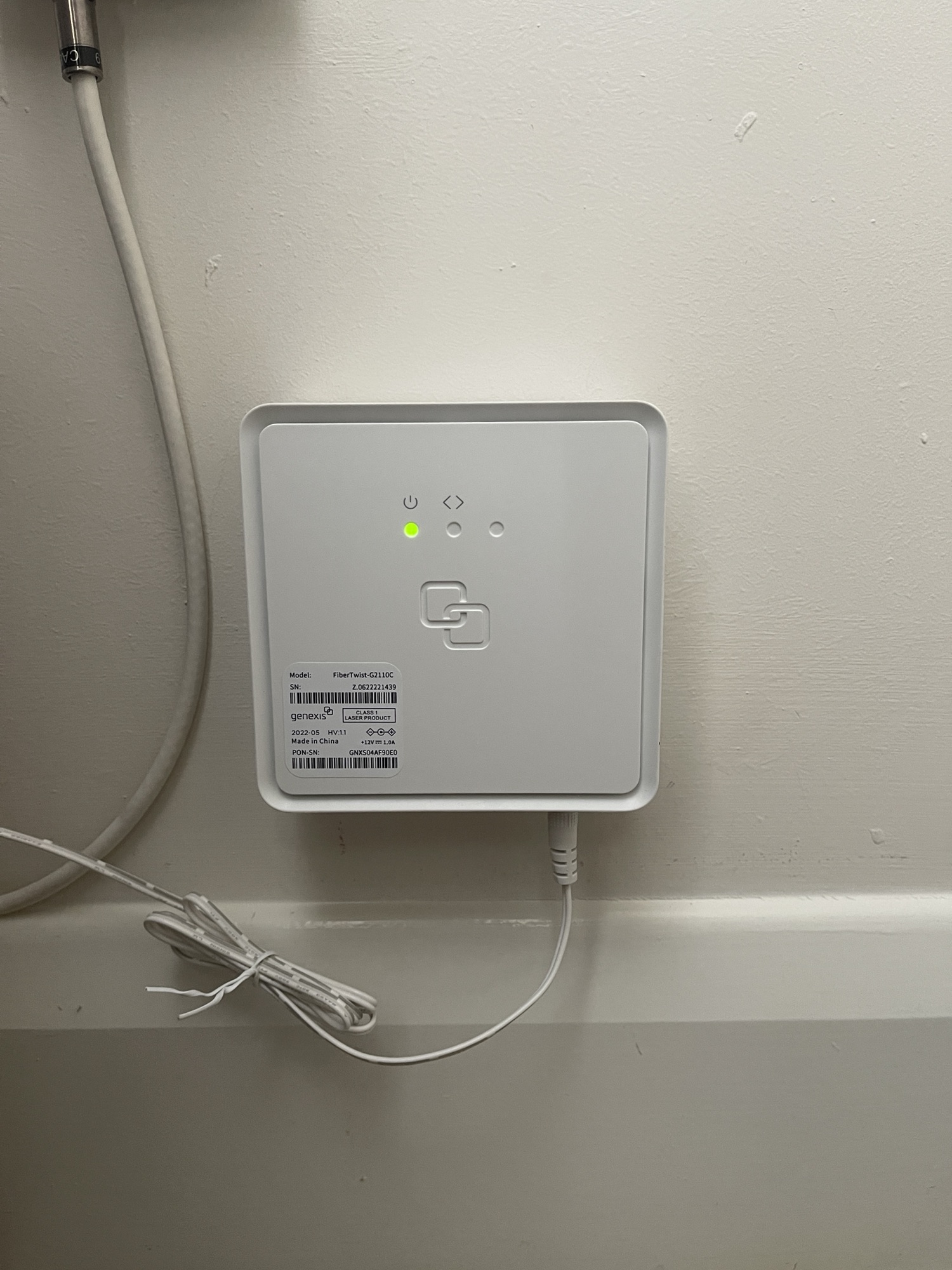
As the UK pushes towards nationwide full-fibre coverage, understanding GPON and XGS-PON technologies is crucial for both consumers and industry professionals. This blog post will explore the key differences between GPON and XGS-PON, and how Exascale, a rising player in the UK’s broadband market, is leveraging both in its Fibre-to-the-Premises (FTTP) network rollout.
What is GPON?
GPON, or Gigabit Passive Optical Network, has been the workhorse of fibre broadband for over a decade. This technology allows multiple users to share a single optical fibre line, making it a cost-effective solution for Internet Service Providers (ISPs) to deliver high-speed internet to homes and businesses.
GPON typically offers downstream speeds of up to 2.5 Gbps and upstream speeds of up to 1.25 Gbps, shared among multiple users on a single line. While these speeds are impressive compared to traditional copper-based connections, the increasing demand for bandwidth has led to the development of more advanced technologies.
What is XGS-PON?
XGS-PON, which stands for 10 Gigabit Symmetric Passive Optical Network, represents the next generation of fibre broadband technology. As the name suggests, XGS-PON can deliver symmetrical speeds of up to 10 Gbps for both downstream and upstream traffic.
Key Differences Between GPON and XGS-PON
- Speed and Bandwidth
The most obvious difference between GPON and XGS-PON is the increase in speed and bandwidth. XGS-PON offers four times the downstream capacity and eight times the upstream capacity of GPON. This significant boost allows for more users per line while maintaining higher speeds for each user. - Symmetrical vs Asymmetrical Speeds
GPON typically provides asymmetrical speeds, with faster download than upload capabilities. XGS-PON, on the other hand, offers symmetrical 10 Gbps speeds in both directions. This is particularly beneficial for businesses and power users who require high upload speeds for activities such as video conferencing, cloud backups, and content creation. - Future-proofing
While GPON is sufficient for many current residential needs, XGS-PON is better positioned to meet the growing bandwidth demands of the future. As more devices connect to the internet and applications become increasingly data-intensive, XGS-PON provides a more scalable solution. - Cost and Implementation
GPON technology is more mature and, therefore, generally less expensive to deploy. XGS-PON equipment is pricier, but the cost gap is narrowing as the technology becomes more widespread. Many ISPs are opting for XGS-PON in new deployments to avoid the need for future upgrades. - Compatibility
XGS-PON is designed to be backwards compatible with GPON, allowing for a smoother transition. This means that ISPs can gradually upgrade their networks without needing to replace all existing infrastructure at once.
Exascale’s Approach: Leveraging Both Technologies
Exascale, a relatively new but rapidly growing ISP in the UK, has taken an innovative approach to its FTTP network deployment by utilising both GPON and XGS-PON technologies. This strategy allows Exascale to balance cost-effectiveness with future-proofing its network.
In areas where Exascale is establishing new infrastructure, the company is primarily deploying XGS-PON technology. This forward-thinking approach ensures that these areas will have access to the highest speeds available and be well-prepared for future bandwidth demands. By investing in XGS-PON from the outset, Exascale is positioning itself as a provider of cutting-edge broadband services.
However, Exascale recognises that there are situations where GPON remains a viable and cost-effective solution. In areas with existing GPON infrastructure or where current demand doesn’t necessitate XGS-PON speeds, Exascale continues to utilise GPON technology. This pragmatic approach allows the company to expand its network more rapidly and cost-effectively while still providing high-quality broadband services.
Exascale’s hybrid approach also facilitates a smoother transition for customers. As bandwidth needs grow, the company can easily upgrade GPON areas to XGS-PON without needing to replace the entire network infrastructure. This flexibility enables Exascale to offer tailored solutions that meet the specific needs of different communities and user groups.
The Future of Fibre Broadband in the UK
As the UK government pushes towards its goal of nationwide gigabit-capable broadband by 2030, the rollout of full-fibre networks is accelerating. While GPON continues to play a significant role in this expansion, XGS-PON is increasingly becoming the technology of choice for new deployments.
Exascale’s approach of utilising both GPON and XGS-PON technologies demonstrates the company’s commitment to providing fast, reliable broadband while also preparing for future needs. This strategy allows Exascale to compete effectively with larger, established ISPs and positions the company as a forward-thinking player in the UK’s broadband market.
For consumers, the deployment of XGS-PON technology promises exciting possibilities. As more UK households gain access to symmetrical 10 Gbps connections, we can expect to see new applications and services that take advantage of these ultra-fast speeds. From seamless 8K video streaming to advanced augmented reality experiences, the future of broadband in the UK looks bright.
In conclusion, while GPON has served the UK well in the initial phases of fibre broadband rollout, XGS-PON represents the next step in the evolution of this critical infrastructure. Exascale’s strategic use of both technologies showcases how ISPs can balance current needs with future capabilities, ultimately benefiting consumers and businesses across the UK.





